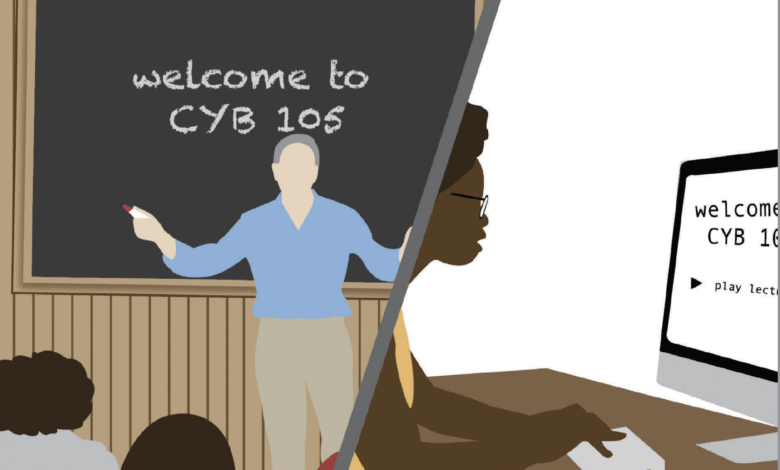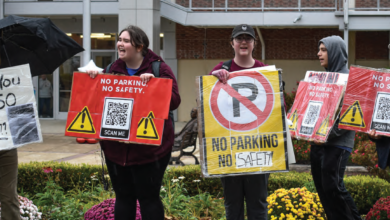
Professors receive grants for computer science work
TECHNOLOGY can be used in a variety of ways and Rider Assistant Professors of Computer Science and Physics Duo Lu, Mourya Narasareddygari and Md Ali have received National Science Foundation grants for their revolutionary ideas.
Though artificial intelligence is a controversial subject in academia due to programs like ChatGPT, Lu utilizes AI to create safer roads.
“How do you quantitatively measure the safety of a segment of a road or a batch of vehicles? You can wait until the cars crash which is unethical if you have a newly constructed road. How do you know if it’s safe based on this design?” Lu asked.
Narasareddygari and Ali, on the other hand, aim to use technology as a tool to make education more accessible.
“This project helps us to investigate, what are the most effective and inclusive methods for these online asynchronous learning environments across multiple educational institutions” said Narasareddygari.
The driving force behind Lu
Lu and one of his research partners, a professor at Arizona State University, Yezhou Yang, have been working on the project for more than five years. Yang was once Lu’s Computing and Augmented Intelligence professor, but now, they work together.
“Over the last decade, and specifically around 2017-2018, there was a tragic incident that happened. Whilst the automatic vehicle tested around the ASU campus, it hit a homeless lady. So she passed away, and that starts to raise awareness for the public regarding how safe these vehicles are and having all these vehicles tested,” Yang said.
In order to increase safety through his project, Lu proposed using drones and adding cameras higher up that can be used to see traffic patterns better. He also uses existing video footage to create 2D and 3D maps of traffic.
“[Traffic camera operators] have an operation room, a very dark room, with walls of monitors showing those things and the operator using a remote to check each wire,” said Lu. “I bet it’s a very difficult job. So we came up with an idea, how about we can use the existing facility, existing cameras and the videos to find out the trajectory of the vehicle on the ground.”
Bharatesh Chakravarthi, a postdoctoral research associate at ASU who collaborated with Lu and Yang, specified the work that AI does for road safety.
“Our system is capable of identifying all types of vehicles, pedestrians and micro-mobility devices. It is capable of detecting incidents, specifically if something goes wrong in terms of collision, if somebody is trying, somebody is disobeying traffic signals they will be able to detect all abnormal incidents that happen,” said Chakravarthi.
AI is utilized as an “extra pair of eyes” according to Lu. Automatic vehicles are given peripheral vision with a sensory method called LiDAR, which uses a laser and creates a 3D model of its surroundings, but this still leaves some blind spots for self-driving cars.
“In many places, especially strategic places, if you have a blind spot or traffic, you have these cameras that can relay perception information to self-driving cars. Then the car doesn’t need to be too smart, or it doesn’t have to have a very good perception,” Lu said.

Professor Duo Lu holding a drone that is used to monitor traffic.
Jay Roberson/The Rider News
Accessibility in asynchronous learning
Narasareddygari and Ali are conducting parts of their research at Rider in Intro to Cybersecurity and Intro to Computer Programming.
“What we’re focusing on is looking for courses being taught in person in spring 2024 and taking it as a base case, and then converting some of the courses to online with the same professor,” Narasareddygari said.
They are going to take the findings from six different universities and use the information to assess whether or not online learning is more effective than traditional in person courses.
“If in the future a scenario like COVID-19 starts again, then I mean, if the asynchronous classes goes well, then it might be a replacement for the in person,” said Ali. “Especially in computer science and cybersecurity. I mean, we have a lab, but many classes we can actually teach asynchronous. That is the main objective of the project.”
This study focuses on marginalized students and how these styles of learning are impacting their learning outcomes.
“We’re looking for enhanced education. We’re trying to explore and implement inclusive and incredibly active learning approaches. So this project can improve the quality of education in computing to higher retention rates,” said Narasareddygari.
By offering a wider range of online learning, more opportunities will be available for students belonging to underrepresented groups, meaning higher rates of diversity and retention among schools.
The tribulations of technology
In Lu’s project, the strategic use of AI reduces the stress on traffic operators and can further develop the intelligence of automated vehicles, but it can take away jobs. AI has already begun to take over many aspects of everyday life, including classrooms and the workplace.
“With all these tools including ChatGPT, including situational awareness and technologies including all kinds of AI tools, being deployed. Not only you, but every single person in this society is now within this giant experiment,” Yang said.
In regards to online learning, teachers are not aware of what their students are doing because they are not able to physically see them work.
“But online, we never know what is happening. They will be looking at the screens, but we don’t know what’s actually happening behind them,” said Narasareddygari.
AI has become a common topic of discussion in the classroom, while online learning gives students more opportunities to use programs like ChatGPT to cheat.
“Students should use ChatGPT and we have to update, the faculty needs to update themselves. ChatGPT can be helpful material for the student. And our assessments should not be the traditional way like asking a question and finding the answer,” said Ali.
Lu explained that AI can be a helpful tool for society as a whole.
“One perspective to consider is that AI is like the steam boat or internal combustion engine. Consider if you need to dig a trench, you can use a shovel. You can do that, or use an excavator. So people consider it just one step further of automation,” Lu said.
As technology continues to advance and aid society, precautions still need to be taken.
“I wouldn’t say that AI is going to harm us, but we need to be aware of the possibility and to actively develop and conduct research, and all of this development and research needs public support,” Yang said.


